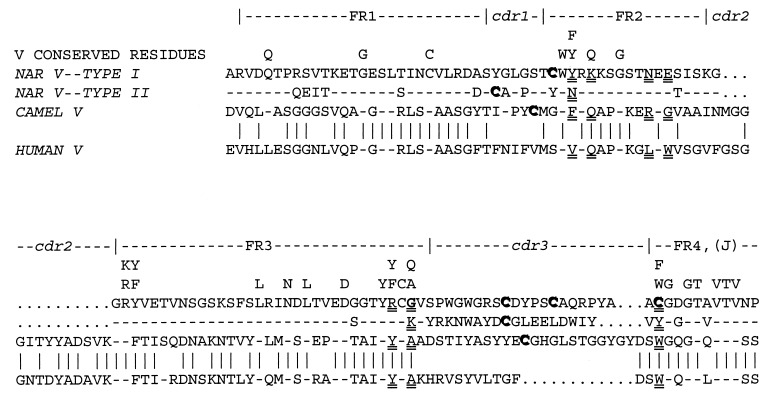Figure 2.
NAR Type I and Type II protein V region sequences compared with each other and with human and camel V. The NAR Type I sequence is of a nonmutated (germ-line-encoded) cDNA (3). The Type II sequence is from a somatically mutated cDNA selected as a typical clone from ref. 3 (no nonmutated Type II cDNA have been observed, but the features described are common to almost every clone). Residues generally considered to be the most evolutionarily conserved among Ig and TCR V are indicated, as are the FR/CDR (13). Dash symbols indicate identity of the bottom three sequences to the NAR V Type I. Vertical lines denote identity between the camel and human sequences (same alignment as in ref. 15). Note the following: (i) presence of evolutionarily conserved or invariant residues in NAR FR regions; (ii) poor conservation of residues that interact between Ig H/L chains (double-underlined in NAR, camel, and human; see ref. 13); (iii) the very short CDR2 of NAR (shown on model in Fig. 4c); (iv) high similarity of the two NAR classes to one another on one hand and of the human to the camel on the other; (v) low identity between NAR and the mammalian sequences; (vi) the unusual Cys residues (bold and shadowed) found in FR2 (C-35), FR4 (C-107), and CDR3 of Type I NAR, and in CDR1 and CDR3 of Type II NAR and the camel sequence; and (vii) the unusual glycine residue found at the end of NAR Type I FR3 (G-84, bold and double-underlined; see Figs. 3c and 4e).

